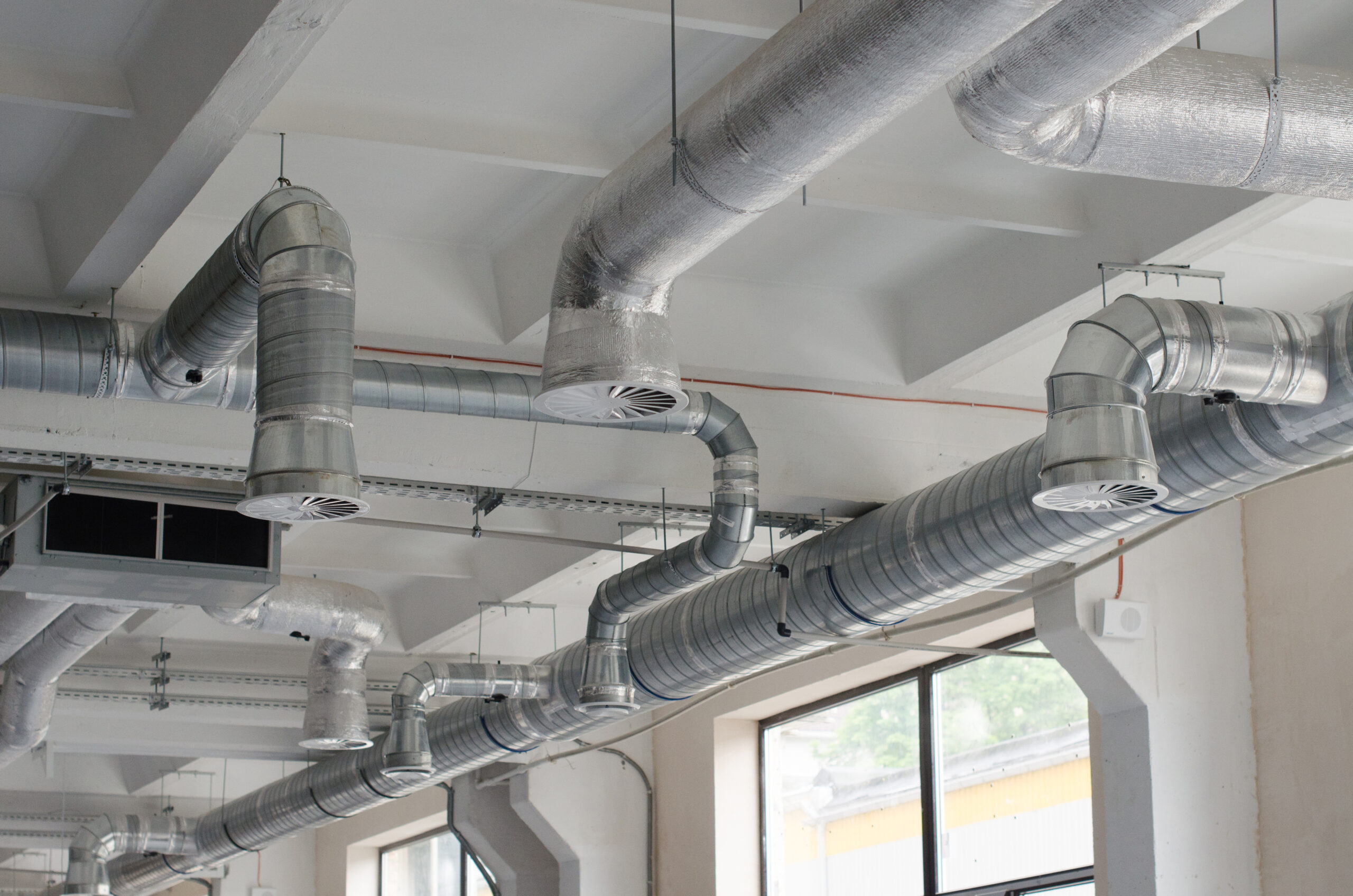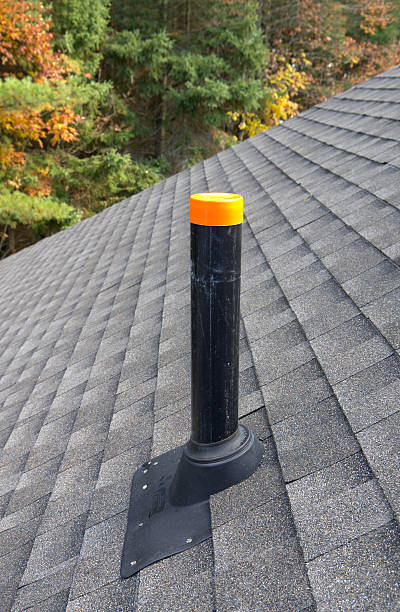The Importance of Correct Ventilation in Residential Plumbing Systems
The Importance of Correct Ventilation in Residential Plumbing Systems
Blog Article
We've noticed the article about What Is A Plumbing Vent & How Do They Work? below on the net and thought it made good sense to quickly share it with you on my blog.

Correct ventilation in plumbing systems is usually neglected, yet it is critical for maintaining the performance and security of your home's pipes. Air flow aids manage air pressure, protect against the accumulation of hazardous gases, and make certain the effective removal of waste. In this guide, we will certainly check out the significance of proper pipes air flow, just how it functions, and the benefits it offers your plumbing system.
Just How Ventilation Functions in Plumbing Equipments
Air Pressure Law
Appropriate air flow maintains well balanced atmospheric pressure within the plumbing system. When water moves via pipes, it displaces air. Without ample ventilation, this displacement can develop adverse pressure, causing slow drains pipes or siphoning of water from catches, which can cause undesirable smells to seep right into the home.
Protecting Against Sewer Gas Build-up
Among the most important features of pipes vents is to stop sewage system gases, such as methane and hydrogen sulfide, from accumulating within the home. These gases can pose serious wellness threats and are extremely flammable. Vent pipelines enable these gases to leave securely outside.
Helping in Waste Elimination
Ventilation helps in the reliable removal of wastewater by stopping airlocks in the water drainage system. When air can flow easily with the vents, it enables water and waste to move efficiently via the pipes, minimizing the danger of obstructions and back-ups.
Advantages of Correct Air Flow
Boosted System Performance
Properly ventilated plumbing systems operate more efficiently, with less obstructions, faster draining pipes, and much less stress on the pipes. This efficiency extends the life-span of the plumbing system.
Improved Air High Quality
By protecting against drain gases from entering your home, appropriate air flow contributes to much better interior air high quality, making your living setting healthier and a lot more comfy.
Avoiding Water Damages
Adequate air flow assists stop water from being siphoned out of catches, which can bring about sewage system gases getting in the home and creating water damage gradually.
Actions to Make Certain Appropriate Ventilation
Consulting Pipes Codes
Constantly get in touch with regional plumbing codes when developing or customizing your plumbing system. These codes provide the necessary guidelines for proper venting and ensure your system meets security criteria.
Normal Examination and Upkeep
Regular inspections can assist recognize possible air flow concerns prior to they end up being significant issues. Maintenance jobs, such as cleaning air vent pipes and looking for clogs, are necessary for maintaining the system in good working order.
Expert Installment
For brand-new setups or major adjustments, it's wise to work with a professional plumbing. They have the know-how to make certain the ventilation system is appropriately designed and mounted according to code.
Recognizing Air Flow in Plumbing
Air flow in pipes describes the network of pipelines that permit air to flow through the drain system. These vents offer several objectives, consisting of regulating atmospheric pressure within the pipes, stopping sewage system gases from getting in the home, and helping in the smooth circulation of wastewater.
Sorts Of Plumbing Vents
Main Heap Vent
The major stack vent, also known as the vent pile, is the key vent in a plumbing system. It prolongs from the primary drainpipe align via the roofing, enabling gases to escape and fresh air to go into the system.
Branch Vent
Branch vents attach to the main stack vent and serve individual fixtures, such as sinks, toilets, and showers. These vents ensure that each component has sufficient ventilation to function correctly.
Air Admission Shutoff (AAV).
An Air Admittance Shutoff (AAV) is a one-way shutoff that enables air to get in the plumbing system without the requirement for a standard vent pipe prolonging via the roof covering. AAVs are generally used in improvements or locations where mounting a conventional vent is unwise.
Signs of Poor Ventilation in Pipes.
Slow Draining Fixtures.
If your sinks, tubs, or commodes are draining pipes slowly, maybe an indication of bad air flow. Insufficient air circulation can create a vacuum cleaner result, making it hard for water to drain properly.
Gurgling Appears.
Gurgling noises originating from drains are commonly an outcome of air being drawn with water traps due to adverse stress in the pipes. This is a clear indication of insufficient ventilation.
Undesirable Smells.
Sewer smells inside your home are a warning that your pipes system is not properly aerated. This could suggest that drain gases are not being effectively vented outside, resulting in possibly harmful problems.
Usual Air Flow Errors.
Poor Vent Sizing.
Making use of undersized air vent pipes can lead to inadequate air flow and stress imbalances in the system. It's vital to use vents that satisfy the specific needs of your plumbing system.
Improper Vent Positioning.
Putting vents as well much from the components they serve can lower their performance. Proper positioning makes sure that air can move openly and efficiently through the system.
Ignoring Code Demands.
Building regulations offer specific guidelines for plumbing ventilation. Neglecting these codes can result in a system that stops working to function correctly and might cause costly repair work or health hazards.
Conclusion.
Appropriate ventilation is a crucial part of any type of plumbing system, making sure that it works successfully and securely. By recognizing the relevance of air flow, identifying the indications of poor air flow, and taking steps to maintain your system, you can avoid pricey problems and secure your home's air high quality.
4 Things You Should Know About Your Plumbing Vents
What Plumbing Vents Are
Also called a vent stack, a plumbing vent is a vertical pipe attached to your drain line that runs through your roof. The plumbing vent pipe, or plumbing air vent, removes gas and odors from your plumbing system and allows fresh air to enter the pipes, helping the water to flow out of the drain pipes.
What Plumbing Vents Do
Plumbing vents have two basic functions. One of which is to allow unpleasant smelling wastewater and sewer gasses to escape your plumbing system instead of entering your home. Plumbing vent pipes are typically located on roofs, away from windows, to ensure the fumes exit the home completely.
The other function of the plumbing vent is to move fresh air into your plumbing system. This helps move water through every plumbing fixture in your house, like toilets and sink drains. Think of the way in which you need to let a little air into the bottle as you pour soda in order to make the drink flow smoothly.
Different Types of Plumbing Vents
True vent: This is the most common vent option. In simplest terms, a true vent is a vertical pipe attached to your drain line that exits through the roof. They often function as the main vent that other fixtures can connect to. Re-vent pipe or auxiliary vent: Attached to the drain line near specific plumbing fixtures, re-vent pipes run up and over to connect to the main vent. Common vent: Two plumbing fixtures installed on opposite sides of a wall are typically tied into the vent stack using something known as a sanitary cross. Wet vent: This venting option operates as a drain pipe and a vent at the same time. Wet vent drainage systems drain water from one fixture while venting the air from another. Although they’ve been used for over 100 years, wet vent systems have only recently been added to the plumbing code in many areas. If you’re planning on installing one in a bathroom remodel, make sure you check your local code prior to construction. Loop vent: For free-standing fixtures like kitchen island sinks, loop vents are ideal. These vent pipes run under the floor, rise from the P-trap, and create a loop inside the cabinet sink. Air admittance valve: An AAV is a one-way mechanical valve typically installed at the site of the plumbing fixture. AAVs allow venting to occur without having to tie into a larger venting system. They’re ideal for venting fixtures where you aren’t able to easily connect to an existing vent system. Common Plumbing Vent Issues
Although vent pipes typically don’t have water flowing through them, they’re still subject to many typical plumbing issues. For example, clogs are one of the most common problems associated with sewer vent pipes. If your vent pipe gets clogged, all of your plumbing fixtures tied into the vent stack will be affected.
A sink with a slow drain that bubbles and gurgles or a strong sewage smell around your toilet are both indicators that your toilet vent pipe is clogged. Because most vent pipes exit through the roof, old leaves, twigs or even a bird’s nest could be clogging the pipe.
Clogs in your vent pipe system cause a buildup of negative pressure, meaning that water won’t be able to flow out of your home very well. It’s similar to putting your finger over the opening of a straw to trap water inside. When you remove your finger, the water is able to flow out of the straw.
If you suspect you have any blockage in your vent, make sure you have a professional come examine the situation. Left unchecked, a blocked air vent can lead to other costly repairs, like leaks and sediment buildup.
Under Pressure
Pipe vents are essential aspects of a home’s plumbing system. Owning a home means learning about all sorts of things you never put much thought into before. But by understanding as much as you can about the important systems of your home, you can keep those budgets intact and those anxiety levels low.
https://www.homeserve.com/en-us/blog/home-improvement/plumbing-vents/

We had been made aware of that write-up about through an acquaintance on another web address. Sharing is good. Helping others is fun. We appreciate reading our article about What Is A Plumbing Vent & How Do They Work?.
Free Estimate Report this page